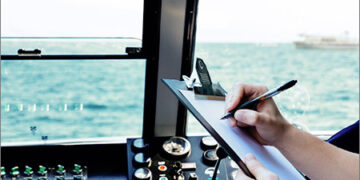The way of life of modern seafarers is a sedentary one and opportunities for sport and fitness are limited. In fact, most ships do not meet the needs of seafarers to do fitness activities. However, they are extremely important. Fitness activities are intended to improve or maintain good physical condition, but the most important fact to remember is that fitness and health are closely related.
Many seafarers claim that they are physically active during the day, climbing stairs, lifting, pulling etc. The important thing to keep in mind is consistency. Exercising specific skills should be done at a consistent rate and remain at an appropriate level: stamina (aerobic endurance), strength and flexibility.
Fitness keeps our bodies in optimum condition. We can move around more easily, recover faster and be less tired. But fitness is not built during training, which is a common mistake. During training, we force our bodies to perform at a high level. During the rest period that follows, the body will compensate for the effort made and become stronger for the next training session. Therefore, a balance will be eventually achieved between effort and compensation. The level of training must be sufficient to reach this balance, as overtraining can actually make us weaker.
However, let’s dive into the specifics and see the full array of fitness benefits. Need more convincing to get moving?
5 ways exercise can lead to a happier you
1. Exercise controls weight
Exercise can help prevent excess weight gain or help maintain weight loss. When you engage in physical activity, you burn calories. The more intense the activity, the more calories you burn.
Don’t worry if you can’t find a large chunk of time to exercise every day. Any amount of activity is better than none at all. To reap the benefits of exercise, just get more active throughout your day — take the stairs instead of the elevator. Consistency is key.
2. Exercise tackles health conditions
Worried about heart disease? Hoping to prevent high blood pressure? No matter what your current weight is, being active boosts high-density lipoprotein (HDL) cholesterol, the “good” cholesterol, and it decreases unhealthy triglycerides. This keeps your blood flowing smoothly, while decreasing your risk of cardiovascular diseases.
Regular exercise helps prevent or manage many health problems and concerns, including:
- Stroke
- Metabolic syndrome
- High blood pressure
- Type 2 diabetes
- Depression
- Anxiety
- Many types of cancer
- Arthritis
- Falls
3. Exercise improves mood
Need an emotional lift? Or need to blow off some steam? Physical activity can help as it stimulates various brain chemicals that may leave you feeling happier, more relaxed and less anxious.
You may also feel better about your appearance and yourself when you exercise regularly, which can boost your confidence and improve your self-esteem.
4. Exercise boosts energy
Regular physical activity can improve your muscle strength and boost your endurance. Exercise delivers oxygen and nutrients to your tissues and helps your cardiovascular system work more efficiently. And when your heart and lung health improve, you have more energy to tackle daily chores.
5. Exercise leads to better sleep
SRegular physical activity can help you fall asleep faster, get better sleep and deepen your sleep. Just don’t exercise too close to bedtime, or you may be too energized to go to sleep.
Determine your fitness type and goals
A very important thing to do before starting fitness training, is to determine the level of training required. Four categories have been determined, according to the Shipowners’ Club:
- Untrained: never trained and/or above 50 years of age
- Beginner: periodic training during the last year
- Advanced: trains 1 – 2 times per week
- Sportsman: trains 3 – 4 times per week
After determining in which category you belong, it is important to set realistic goals. “Why do you want to exercise?” is the first question to ask yourself. Do you want to become fitter or lose weight? Maybe you want to improve the state of both your body and mind.
Then, choose the kind of training you want: stamina, strength or flexibility and the level of intensity: light, moderate or hard. What do you want to achieve and over what period of time? Be realistic and aim for that: set measurable targets in terms of e.g. heart rate and weight.
Goals should be specific rather than general – challenging but achievable – divided into short-term sub-goals. The contents of your exercise programme should be based on your current fitness level and on your fitness goals.
In addition, select a location onboard where you want to train: generally you can use the fitness room or gym, if available, or you can do exercises in your cabin or in the mess rooms with friends. Outside, opportunities may seem limited but you can walk, jog and do exercises (e.g. on staircases).




























































